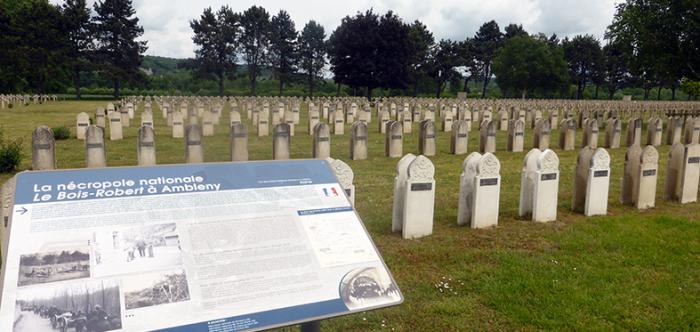
La nécropole nationale Le Bois-Robert. © Guillaume Pichard
Pour accéder au panneau d'information de la nécropole, cliquer ici 
Located at Le Bois-Robert, the Ambleny national cemetery holds 10,601 Frenchmen including 3,076 in four ossuaries, 76 French civilian victims and one Russian who died during the First World War. Created in 1923, this site was developed from 1934-1935 in order to bring together the bodies exhumed from military cemeteries to the south-west of Soissons.
Among the soldiers buried here are the bodies of numerous overseas soldiers. From 1917-1918, Caledonian Creoles were assigned to the Pacific Mixed Regiment (BMP), a unit made up of Kanaks, Caledonians and Tahitians. Behind the front, in the sector of Ailette sector, close to Chemin des Dames, these men took part in trench repair work.
Among the 76 civilian victims is Estelle Allain, née Berhamelle, aged 49, who died on 24 June 1915 in Soissons (grave n°15). She lived in an apartment in Soissons, rue Sainte-Eugénie, and her building was bombed by the Germans in June 1915. She did not have time to hide in the cellar, which had become a shelter, and was seriously wounded. She died as a result of her injuries, and was recognised as having died for her country.
In 1954, the bodies of 561 French soldiers who died for France during the Second World War were also brought here.